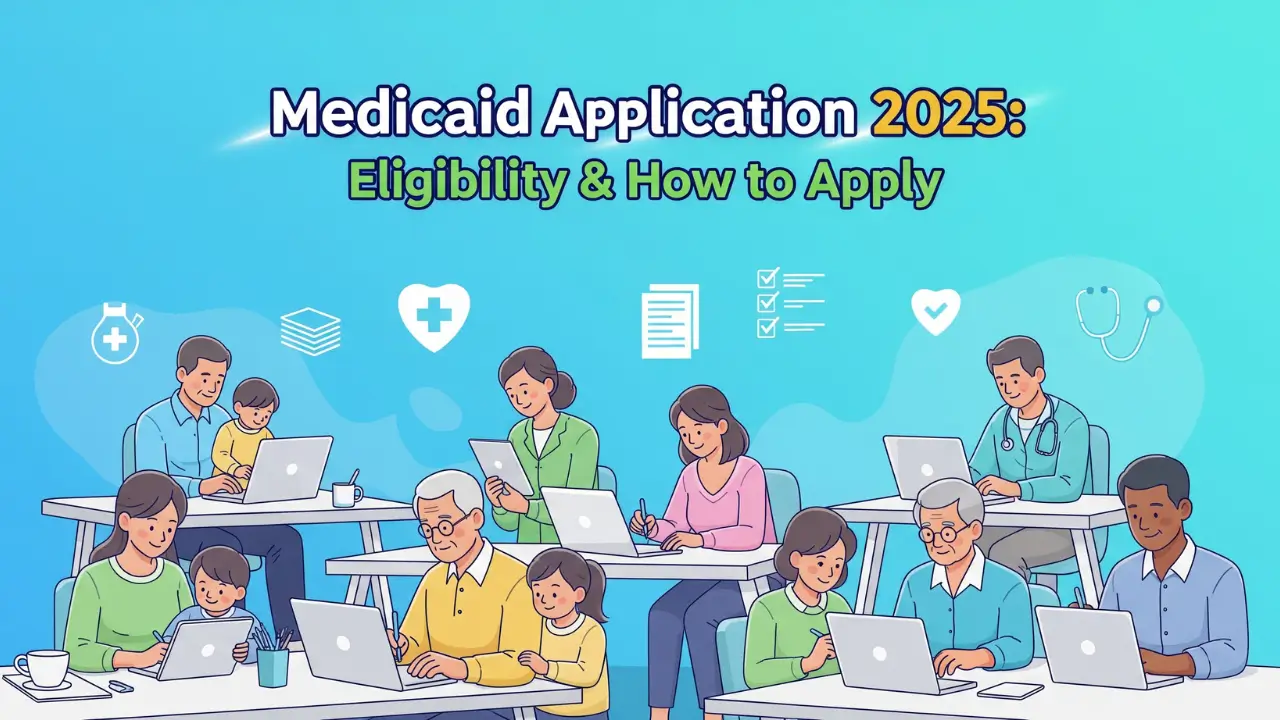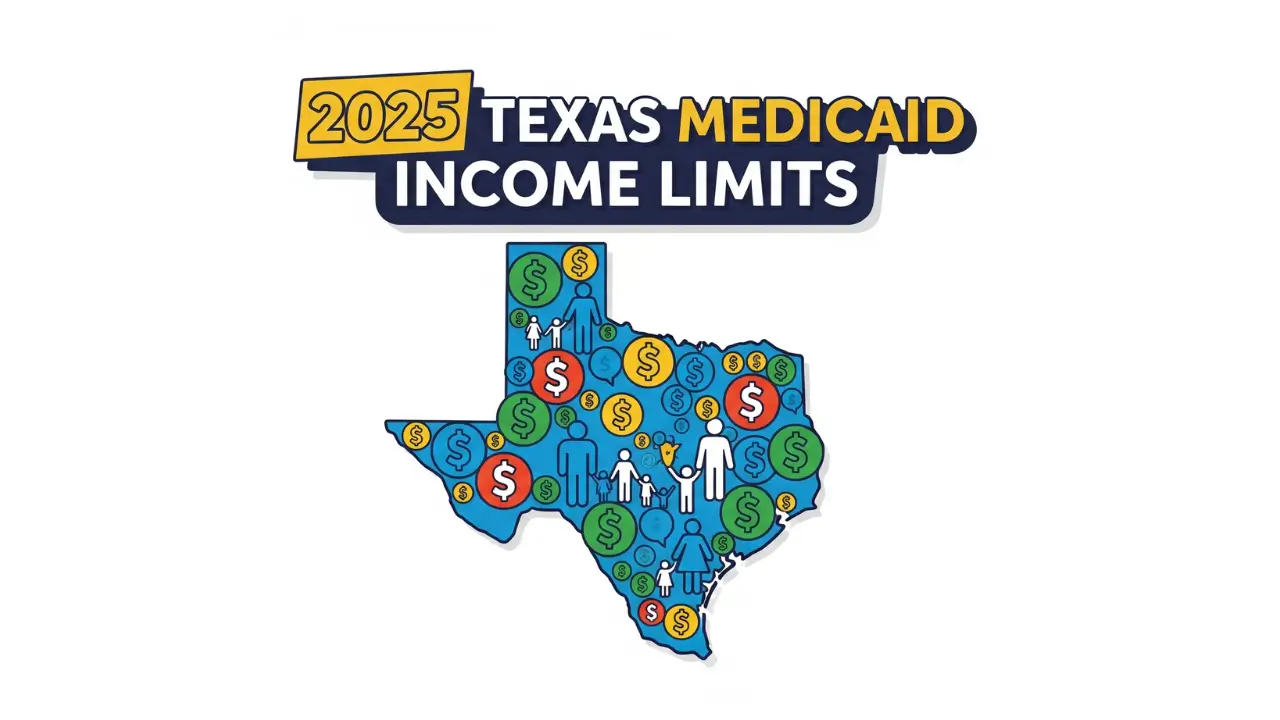In 2025, a single adult in California can qualify for Medi-Cal if they earn about $21,597 per year or less—that’s 138% of the Federal Poverty Level (FPL).
Income limits rise for families, pregnant women, and children, with some counties offering coverage up to 322% FPL.
To see if your household qualifies, use our California Medi-Cal Income Limits Calculator 2025 for an instant eligibility check based on your family size and county.
Key Takeaways
- California’s Medicaid program is called Medi-Cal
- Adults qualify up to 138% of the Federal Poverty Level (FPL)
- Pregnant women and children often qualify for up to 200% FPL or more
- Some counties offer children’s coverage up to 322% FPL
- In 2024, California expanded Medi-Cal to cover all low-income residents regardless of immigration status
- Starting in 2026, asset limits will be reinstated for certain programs
Understanding Medi-Cal in California
Medi-Cal is California’s Medicaid program, offering free or low-cost coverage to low-income residents. It covers doctor visits, hospital care, prescriptions, preventive screenings, dental care, mental health treatment, and long-term support for seniors and people with disabilities.
California has been a leader in Medicaid expansion. The state adopted expansion early under the Affordable Care Act, and in 2024, it went even further by extending Medi-Cal to all income-eligible residents, including undocumented adults.
This makes California unique, as most states restrict Medicaid to citizens or certain qualified immigrants. With Medi-Cal covering more than 15 million Californians, it is the largest Medicaid program in the U.S.
This scale means that more than one in three California residents now rely on Medi-Cal for healthcare access.
California Medi-Cal Income Limits 2025 by Household Size
| Household Size | 100% FPL (Annual) | 138% FPL (Adults) | 200% FPL (Children/Pregnancy) | 322% FPL (Select Counties) |
| 1 person | $15,650 | $21,597 | $31,300 | $50,393 |
| 2 person | $21,150 | $29,187 | $42,300 | $68,103 |
| 3 person | $26,650 | $36,777 | $53,300 | $85,813 |
| 4 person | $32,150 | $44,367 | $64,300 | $103,523 |
| 5 person | $37,650 | $51,957 | $75,300 | $121,233 |
| 6 person | $43,150 | $59,547 | $86,300 | $138,943 |
Explanation:
- Adults qualify up to 138% FPL through MAGI Medi-Cal
- Children and pregnant women qualify at higher levels, usually 200% FPL or more
- In Santa Clara, San Mateo, and San Francisco counties, children can qualify up to 322% FPL
- Larger families have higher income thresholds to reflect higher living costs
Example: A single parent with two kids (3-person household) can earn up to about $36,777 and still qualify for adult coverage. In select counties, children in this family could qualify with a household income up to $85,813.
Who Qualifies for Medi-Cal in California?
California uses a broad approach to eligibility. Groups that may qualify include:
Adults without children: Covered up to 138% FPL under expansion through MAGI Medi-Cal.
Parents and caretakers: Covered at the same 138% FPL limit.
Children: Eligible up to 200% FPL statewide, with higher limits in certain counties:
- Santa Clara, San Mateo, and San Francisco counties: Up to 322% FPL
- Most other counties: Up to 266% FPL for some programs
Pregnant women: Eligible at higher limits for comprehensive maternity care, typically up to 200% FPL or more.
Seniors and people with disabilities: Covered under different rules, with both income and assets considered. Non-MAGI programs may have different thresholds.
Undocumented residents: As of 2024, California covers all low-income adults regardless of immigration status, making it one of the most inclusive Medicaid programs nationwide.
This makes California one of the most inclusive Medicaid programs in the nation, with protections for groups often left out in other states.
Important 2026 Changes: Asset Limits Returning
Critical Update: Starting January 1, 2026, California will reinstate asset limits for certain Medi-Cal programs, marking a significant change after years of eliminating these restrictions.
New Asset Limits (Effective 2026):
- Individual applicants: $130,000 in countable assets
- Married couples: $195,000 in countable assets
Who This Affects:
- Seniors applying for Medi-Cal
- People with disabilities
- Long-term care recipients
- Non-MAGI Medi-Cal programs
What Counts as Assets:
- Bank accounts and savings
- Stocks, bonds, and investments
- Second homes or rental properties
- Vehicles over certain limits
Exempt Assets:
- Primary residence
- One vehicle per person
- Personal belongings and household items
- Burial funds up to certain limits
Timeline for Current Beneficiaries:
- Current beneficiaries must report assets during their 2026 annual renewals
- Those exceeding limits may lose coverage unless they spend down assets
- Planning ahead is crucial for affected individuals
Enrollment Trends in California
California’s Medi-Cal program has seen major growth over the past decade:
- In 2023, Medi-Cal enrollment peaked during the COVID-19 continuous coverage protections
- As renewals resumed in 2023–2024, enrollment decreased slightly but still covers more than 15 million residents
- Medi-Cal now covers about 40% of California’s population, making it one of the most relied-upon public healthcare programs in the state
- With the 2024 expansion to undocumented residents, California expects enrollment to remain high in 2025, bucking the national trend of declining Medicaid rolls
These trends show that Medi-Cal continues to be central to California’s healthcare safety net.
How to Apply for Medi-Cal in California
Applying for Medi-Cal in 2025 is straightforward:
- Start your application: Apply online at Covered California or the Medi-Cal website
- Check eligibility: Use the online screening tool to estimate your qualification
- Gather required documents:
- Proof of income (pay stubs, tax returns, bank statements)
- Social Security numbers or Individual Taxpayer Identification Numbers (ITINs)
- Proof of California residency (lease, utility bill, or California ID)
- Proof of pregnancy or disability if applicable
- Immigration documents if applicable
- Submit application: Online, by mail, or at your county social services office
- Follow up: Update your information promptly if your income or household size changes
- Asset reporting: Starting in 2026, certain applicants must report assets during renewals
Tip: Many county offices in California offer in-person support for immigrants and seniors who need help with the application process.
Share of Cost Program
If your income is above the regular Medi-Cal limits, you may still qualify through the Share of Cost program. This works like a deductible – you pay a monthly amount before Medi-Cal coverage begins. This option is particularly valuable for:
- Seniors with fixed incomes slightly above limits
- People with high medical expenses
- Individuals who need long-term care services
Alternatives If You Don’t Qualify
If you don’t qualify for Medi-Cal, other programs may help:
Covered California Marketplace Plans: Subsidized health insurance plans with premium tax credits and cost-sharing reductions that make coverage more affordable for middle-income families.
Healthy Families Program (CHIP): Covers children whose families earn too much for Medi-Cal but still need assistance with healthcare costs.
Community Health Centers: Federally qualified health centers throughout California offer services on a sliding fee scale based on income and family size.
County Health Programs: Some counties offer additional health coverage programs for residents who don’t qualify for Medi-Cal.
Frequently Asked Questions
Q: What is the maximum income for a single adult to qualify in California in 2025?
A: About $21,597 per year (138% FPL) for MAGI Medi-Cal.
Q: Does California cover undocumented residents?
A: Yes. As of 2024, all low-income residents, regardless of immigration status, can qualify for Medi-Cal.
Q: What about pregnant women in California?
A: Pregnant women qualify at higher limits, usually up to 200% FPL or more, depending on the specific program.
Q: How many Californians are on Medi-Cal?
A: Over 15 million residents in 2025, nearly 40% of the state’s population.
Q: What are the asset limits starting in 2026?
A: $130,000 for individuals and $195,000 for couples, affecting seniors, people with disabilities, and long-term care programs.
Q: How often do Medi-Cal income limits change?
A: Every January when HHS updates the federal poverty guidelines.
Q: Where can I apply for Medi-Cal?
A: Through Covered California, the Medi-Cal website, or your county social services office.
Conclusion
California’s Medi-Cal program remains one of the most comprehensive Medicaid systems in the country. With 2025 income limits based on federal poverty guidelines, adults qualify up to 138% FPL, while children and pregnant women qualify at much higher levels, especially in certain counties where children can qualify up to 322% FPL.
Unlike many states, California now extends coverage to all low-income residents, including undocumented adults, which sets it apart as a national leader. With over 15 million people enrolled, Medi-Cal continues to be the backbone of healthcare access for millions of families.
However, the upcoming 2026 asset limit reinstatement represents a significant change that will affect hundreds of thousands of Californians, particularly seniors and people with disabilities. Current beneficiaries should begin planning now for the asset reporting requirements that will take effect during 2026 renewals.
If you think you may qualify, apply through Covered California or your local social services office. Even if you don’t meet Medi-Cal’s income rules, options like subsidized marketplace plans, CHIP, or community health centers can help keep healthcare within reach. With proper planning and understanding of the 2026 changes, you can navigate California’s healthcare system effectively.




